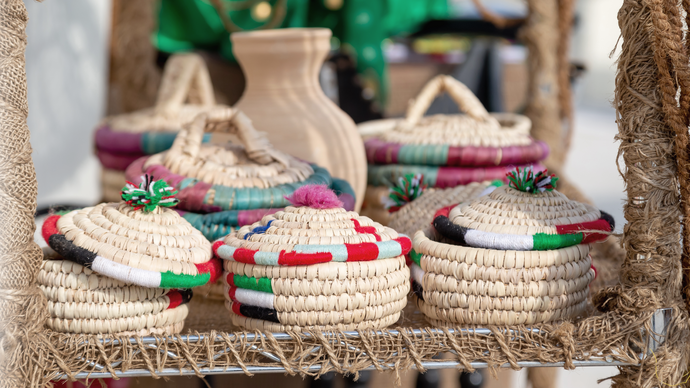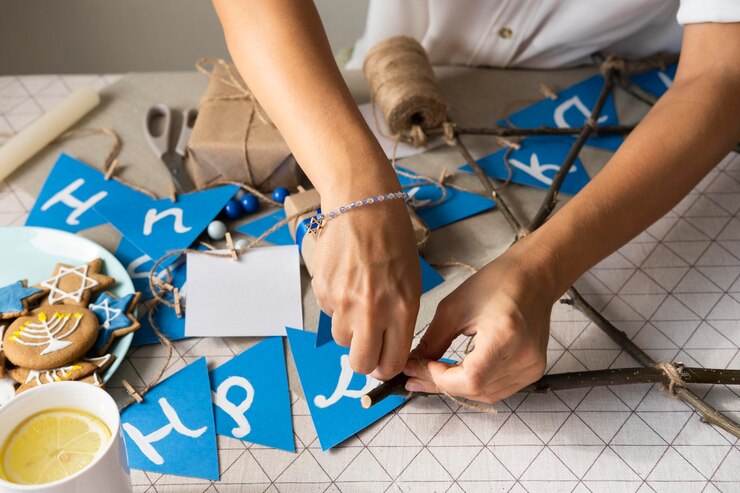Handicrafts have been a fundamental aspect of human culture for centuries, embodying the skill, creativity, and cultural identity of artisans worldwide. These handmade creations, ranging from textiles and pottery to woodworking and jewelry, not only serve practical purposes but also reflect the rich traditions and stories of communities. In an era dominated by mass production and globalization, handicrafts offer a unique opportunity to celebrate individuality and cultural heritage.
The Significance of Handicrafts
Handicrafts hold significant cultural value, acting as a means of preserving traditions that have been passed down through generations. Each piece tells a story, encapsulating the history, beliefs, and practices of its creator. For instance, traditional Indian handicrafts like pottery from Khurja or textiles from Varanasi reflect regional styles and cultural motifs that are centuries old. Similarly, the intricate beadwork of Native American artisans speaks to the spiritual and practical aspects of their communities.
Beyond cultural preservation, handicrafts play a crucial role in economic development. Many artisans rely on their craft for their livelihood, creating jobs and fostering entrepreneurship. Supporting local handicrafts can uplift entire communities, allowing artisans to thrive while keeping their traditions alive. Moreover, the handicraft sector contributes to sustainable development by promoting environmentally friendly practices. Artisans often use natural materials, reducing reliance on synthetic goods and minimizing waste.
The Diverse World of Handicrafts
The world of handicrafts is incredibly diverse, encompassing a wide range of techniques and materials. Here are a few notable categories:
- Textiles: Handwoven fabrics, embroidered garments, and handcrafted rugs are just a few examples of textile handicrafts. Countries like India, Peru, and Morocco are renowned for their vibrant textile traditions, each with unique patterns and techniques that reflect their cultural narratives.
- Pottery: From terracotta pots in Mexico to fine porcelain in China, pottery is one of the oldest forms of handicrafts. Each region boasts distinct styles, with artisans often using traditional techniques passed down through generations. The functional beauty of pottery serves as both art and utility in everyday life.
- Woodworking: Skilled woodworkers create everything from furniture to intricate carvings. In countries like Indonesia, artisans use local woods to craft traditional masks and sculptures that embody their cultural heritage. Each piece often requires hours of labor, showcasing the artisan’s skill and dedication.
- Jewelry: Handcrafted jewelry, made from precious metals and gemstones, reflects personal stories and cultural significance. In places like India and Thailand, artisans use techniques such as filigree and stone-setting to create unique pieces that are often steeped in tradition.
- Baskets and Weaving: Basket weaving is an ancient craft that utilizes natural materials such as reeds, grasses, and vines. Indigenous communities around the world create beautiful, functional baskets that reflect their environment and traditions. The techniques used can vary significantly from one culture to another, making each piece unique.
The Challenges Faced by Artisans
Despite the beauty and significance of handicrafts, artisans face numerous challenges. The rise of mass-produced goods often leads to a decline in demand for handmade items. As consumers gravitate towards cheaper, machine-made products, many artisans struggle to sustain their livelihoods. Additionally, the lack of access to markets, resources, and training can hinder the growth of the handicraft sector.
Efforts to support artisans and promote their work are essential for preserving these traditions. Initiatives such as fair trade, cooperatives, and online marketplaces have emerged to connect artisans with a global audience. By valuing the skill and artistry behind handicrafts, consumers can contribute to the survival of these vital cultural expressions.
The Future of Handicrafts
As society becomes increasingly aware of the environmental and social impacts of consumerism, the demand for handicrafts is experiencing a resurgence. Consumers are seeking unique, ethically produced items that tell a story. Handicrafts offer a sustainable alternative to mass-produced goods, encouraging individuals to make conscious choices that benefit both artisans and the environment.
Moreover, the rise of digital platforms allows artisans to showcase their work beyond local markets. Social media and e-commerce sites enable them to reach a global audience, gaining visibility and support for their craft. This digital shift not only helps artisans sell their products but also educates consumers about the importance of preserving traditional crafts.
Conclusion
Handicrafts are more than mere objects; they are a testament to human creativity, cultural identity, and heritage. Supporting artisans and their crafts is crucial for preserving these traditions for future generations. As we embrace the uniqueness and authenticity of handmade goods, we contribute to a more sustainable and culturally rich world. By choosing to celebrate handicrafts, we honor the stories and skills of artisans while fostering a deeper appreciation for the art of craftsmanship. In a rapidly changing world, handicrafts remind us of the beauty of tradition, creativity, and the human spirit.








+ There are no comments
Add yours